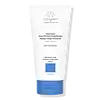What's inside
What's inside
 Benefits
Benefits

 Concerns
Concerns

 Ingredients Side-by-side
Ingredients Side-by-side

Water
Skin ConditioningCetearyl Alcohol
EmollientShea Butter Glycerides
EmulsifyingBehentrimonium Chloride
PreservativeGlycerin
HumectantBrassicamidopropyl Dimethylamine
Skin ConditioningCetyl Alcohol
EmollientDiheptyl Succinate
EmollientPolyester-37
Skin ConditioningCapryloyl Glycerin/Sebacic Acid Copolymer
Skin ConditioningCaprylic/Capric Triglyceride
MaskingDisunfloweroylethyl Dimonium Chloride
Sunflower Seed Oil Glycerides
EmollientSclerocarya Birrea Seed Butter
EmollientCetrimonium Chloride
AntimicrobialSclerocarya Birrea Seed Oil
HumectantSilk Amino Acids
HumectantHydrolyzed Silk
HumectantHelianthus Annuus Seed Oil
EmollientSericin
Skin ConditioningPanthenol
Skin ConditioningVanilla Planifolia Fruit Extract
Skin ConditioningLauryl Lactyl Lactate
Skin ConditioningGuar Hydroxypropyltrimonium Chloride
Skin ConditioningCitric Acid
BufferingCaprylyl Glycol
EmollientSodium Benzoate
MaskingEthylhexylglycerin
Skin ConditioningHexylene Glycol
EmulsifyingPhenoxyethanol
PreservativePotassium Sorbate
PreservativeBenzyl Alcohol
PerfumingWater, Cetearyl Alcohol, Shea Butter Glycerides, Behentrimonium Chloride, Glycerin, Brassicamidopropyl Dimethylamine, Cetyl Alcohol, Diheptyl Succinate, Polyester-37, Capryloyl Glycerin/Sebacic Acid Copolymer, Caprylic/Capric Triglyceride, Disunfloweroylethyl Dimonium Chloride, Sunflower Seed Oil Glycerides, Sclerocarya Birrea Seed Butter, Cetrimonium Chloride, Sclerocarya Birrea Seed Oil, Silk Amino Acids, Hydrolyzed Silk, Helianthus Annuus Seed Oil, Sericin, Panthenol, Vanilla Planifolia Fruit Extract, Lauryl Lactyl Lactate, Guar Hydroxypropyltrimonium Chloride, Citric Acid, Caprylyl Glycol, Sodium Benzoate, Ethylhexylglycerin, Hexylene Glycol, Phenoxyethanol, Potassium Sorbate, Benzyl Alcohol
Water
Skin ConditioningC13-16 Isoparaffin
SolventPropylene Glycol
HumectantDimethicone
EmollientTriethanolamine
BufferingPhenoxyethanol
PreservativePEG/PPG-17/18 Dimethicone
EmulsifyingCarbomer
Emulsion StabilisingPotato Starch Modified
Behentrimonium Chloride
PreservativeHydroxypropyl Guar
Emulsion StabilisingCaprylyl Glycol
EmollientPolyquaternium-4
Amodimethicone
Poly(Linseed Oil)
Linalool
PerfumingButylphenyl Methylpropional
PerfumingBenzophenone-4
UV AbsorberHexyl Cinnamal
PerfumingBenzyl Salicylate
PerfumingBenzyl Alcohol
PerfumingCitronellol
PerfumingAlpha-Isomethyl Ionone
PerfumingTrideceth-6
Emulsifying2-Oleamido-1,3-Octadecanediol
Skin ConditioningXylose
HumectantHydroxycitronellal
PerfumingCoumarin
PerfumingLimonene
PerfumingIris Florentina Root Extract
MaskingCetrimonium Chloride
AntimicrobialRoyal Jelly Extract
Skin ConditioningParfum
MaskingWater, C13-16 Isoparaffin, Propylene Glycol, Dimethicone, Triethanolamine, Phenoxyethanol, PEG/PPG-17/18 Dimethicone, Carbomer, Potato Starch Modified, Behentrimonium Chloride, Hydroxypropyl Guar, Caprylyl Glycol, Polyquaternium-4, Amodimethicone, Poly(Linseed Oil), Linalool, Butylphenyl Methylpropional, Benzophenone-4, Hexyl Cinnamal, Benzyl Salicylate, Benzyl Alcohol, Citronellol, Alpha-Isomethyl Ionone, Trideceth-6, 2-Oleamido-1,3-Octadecanediol, Xylose, Hydroxycitronellal, Coumarin, Limonene, Iris Florentina Root Extract, Cetrimonium Chloride, Royal Jelly Extract, Parfum
Ingredients Explained
These ingredients are found in both products.
Ingredients higher up in an ingredient list are typically present in a larger amount.
This ingredient is a preservative and often used for it's anti-static properties. You'll most likely see this ingredient in hair conditioners.
It does not cause irritation or sensitization in leave-on products at 1-5%.
Benzyl Alcohol is most commonly used as a preservative. It also has a subtle, sweet smell. Small amounts of Benzyl Alcohol is not irritating and safe to use in skincare products. Most Benzyl Alcohol is derived from fruits such as apricots.
Benzyl Alcohol has both antibacterial and antioxidant properties. These properties help lengthen the shelf life of products. Benzyl Alcohol is a solvent and helps dissolve other ingredients. It can also improve the texture and spreadability.
Alcohol comes in many different forms. Different types of alcohol will have different effects on skin. This ingredient is an astringent alcohol.
Using high concentrations of these alcohols are drying on the skin. They may strip away your skin's natural oils and even damage your skin barrier. Astringent alcohols may also irritate skin.
Other types of astringent alcohols include:
According to the National Rosacea Society based in the US, you should be mindful of products with these alcohols in the top half of ingredients.
Any type of sanitizing product will have high amounts of alcohol to help kill bacteria and viruses.
Learn more about Benzyl AlcoholCaprylyl Glycol is a humectant and emollient, meaning it attracts and preserves moisture.
It is a common ingredient in many products, especially those designed to hydrate skin. The primary benefits are retaining moisture, skin softening, and promoting a healthy skin barrier.
Though Caprylyl Glycol is an alcohol derived from fatty acids, it is not the kind that can dry out skin.
This ingredient is also used as a preservative to extend the life of products. It has slight antimicrobial properties.
Learn more about Caprylyl GlycolThis ingredient is a preservative, antimicrobial, and emulsifier. It is often used in cosmetics for its ability to cleanse, condition, and reduce static.
Cetrimonium chloride is a quaternary ammonium salt, meaning it has a water-soluble structure.
Phenoxyethanol is a preservative that has germicide, antimicrobial, and aromatic properties. Studies show that phenoxyethanol can prevent microbial growth. By itself, it has a scent that is similar to that of a rose.
It's often used in formulations along with Caprylyl Glycol to preserve the shelf life of products.
Water. It's the most common cosmetic ingredient of all. You'll usually see it at the top of ingredient lists, meaning that it makes up the largest part of the product.
So why is it so popular? Water most often acts as a solvent - this means that it helps dissolve other ingredients into the formulation.
You'll also recognize water as that liquid we all need to stay alive. If you see this, drink a glass of water. Stay hydrated!
Learn more about Water